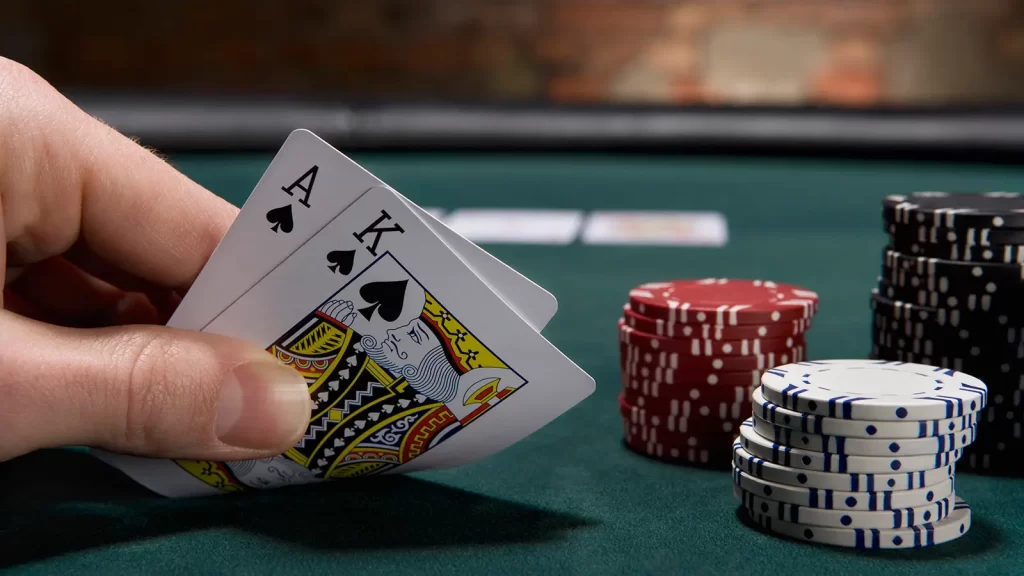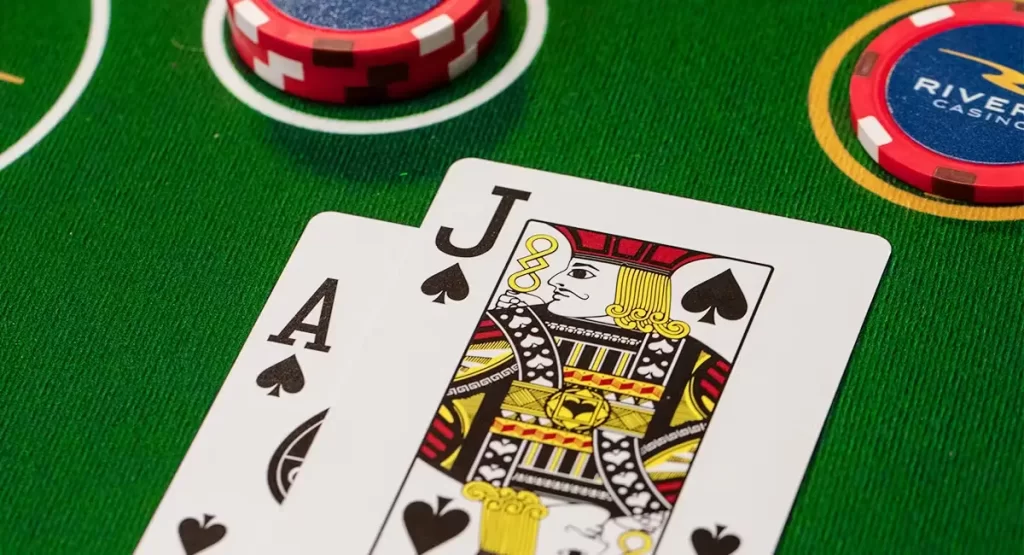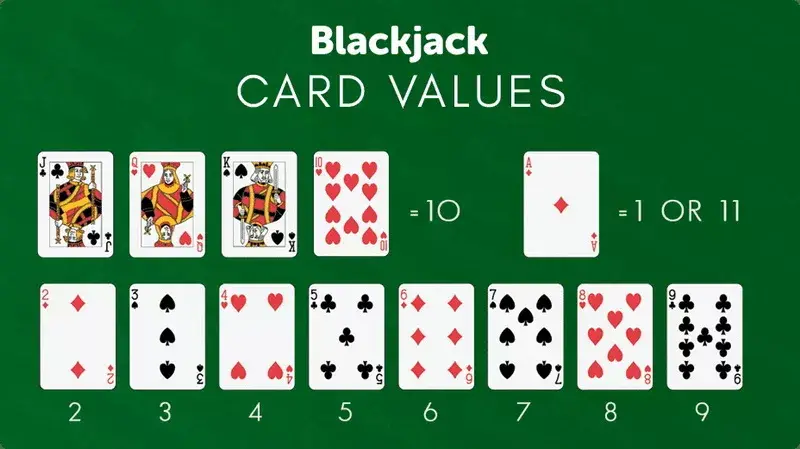Blackjack is not only an exciting card game but also a place where you can show off your calculation and strategy skills. With simple but challenging rules, Blackjack has become one of the most favorite games in casinos. This article will guide you on how to play Blackjack in a detailed and easy-to-understand way, helping you confidently participate in every game.
Introduction to the development of blackjack
Blackjack, also known as “21”, is one of the most popular and favorite card games in casinos around the world. With the combination of luck and skill, Blackjack brings thrilling and dramatic moments to players.

With the development of technology, Blackjack has undergone a strong change since it appeared in online casinos. The online version not only retains the appeal of the traditional version but also brings outstanding utilities:
- Easy Access: Players can participate anytime, anywhere with just an internet-connected device.
- Variety of versions: Online Blackjack offers many new variations such as European Blackjack, American Blackjack, or Perfect Pairs, bringing freshness and rich choices.
- Online casino experience: With livestream technology, players can interact with real Ph444 dealers through live tables, authentically recreating the atmosphere of a traditional casino.
- Player support features: Many online gaming portals provide tools such as basic strategy boards and game statistics to help players improve their skills quickly.
Complete Guide to the Latest Blackjack Rules
Blackjack is a card game with simple rules, but it requires players to have reasonable calculations and strategies. To understand better, we will delve into how to use the deck of cards, the values of the cards, and the action options in the game.

Decks and card values
Blackjack uses one or more standard decks of 52 cards, excluding Jokers. Each card in the deck has a specific value:
- Number cards 2 to 10: Value corresponds to the number written on the card.
- Face cards (J, Q, K): Each card is worth 10 points.
- Ace (A): Has a flexible value of 1 or 11, depending on the total points of the player’s hand, to achieve the highest advantage.
The way to score in Blackjack is simple: add up the total value of all the cards in your hand. For example, if you have a 10 and an Ace, the total is 21 – a perfect Blackjack.
Action options in the game
After receiving the first two cards, the player will have several different action options to optimize their chances of winning.
Hit (Draw Extra Card): The player draws an additional card in the hope of increasing the total score, but must be careful not to exceed 21.
Stand: When the player feels that the total score is strong enough to beat the dealer, he can choose to stand and not draw more cards.
Double Down: The player doubles the initial bet and is only allowed to draw one more card. This is a strategy often used when the player has a strong hand.
Split: If the first two cards are the same (for example, two 8s), the player may split them into two separate hands and place additional bets.
Surrender: The player gives up the hand at the beginning and receives half of the bet back. This action is often applied when the hand is very weak.
The above actions not only help players optimize their strategies but also increase the excitement and tension in each game.
How to play Blackjack from the basics for beginners
Knowing the rules of the game is one thing, but applying them in the game is another challenge. Let’s take a detailed look at how to play Blackjack from betting to the end of the game.

Start the game
A game of Blackjack begins with the betting step:
- How to bet: Players place a specific amount of money in the betting area on the Blackjack table. This amount will determine the reward or loss when the hand ends.
After the players have completed their bets, the dealer will deal the cards:
- Dealer: Each player receives two cards, face up or face down, depending on the rules. The dealer also receives two cards, one of which is face up.
- Blackjack Check: If the total of any player’s first two cards is 21, they win immediately unless the dealer also has Blackjack.
Play-by-play process
When the game begins, players take turns making decisions based on their cards and the dealer’s face-up card. The process goes like this:
The player decides:
- If the total score is low (below 12), the player usually draws another card (Hit).
- With a high total score (17 or more), players often choose to stand.
- When given the opportunity, players can double down or split.
Banker acts: The banker may only act after all players have completed their turn. By law, the banker may:
- Draw a card when the total score is less than 17.
- Stop if greater than 17 points.
Common scenario:
- When the player and the dealer have the same total points: The game is a push.
- If the score is higher than 21, the player at the table wins.
- The player wins when the score does not exceed 21 but is higher than the dealer’s.
Tips for effective blackjack playing
Playing Blackjack is not only a game of chance, but also a test of the player’s analytical skills, strategy, and psychology. To increase your winning rate, apply the following in-depth tips.

Remember the post that appeared.
One of the most important skills in playing Blackjack is to memorize the cards that have been dealt. Based on that, you can:
- Estimated Odds of Showing: Determines the likelihood that a high or low card will come up next. For example, if many small cards have been dealt, the probability of a high card coming up is higher.
- Adjust your strategy: If you know that there are still many big cards, you can consider standing earlier to avoid risks. On the contrary, if there are still many small cards, it is safer to hit.
Memorizing cards does not require you to know the entire deck; you only need to observe the overview to make timely decisions.
Know when to take risks.
Risk is an essential element in Blackjack, but it needs to be carefully calculated:
- Play multiple hands: This gives you the opportunity to collect more profits from different games. However, if luck is not on your side, stop in time to avoid big losses.
- Set limits: Determine in advance the maximum amount of money you are willing to risk. This helps you better control your psychology and finances during the game.
How to play blackjack when drawing more cards (hit)
Drawing additional cards is the most important decision in every hand of Blackjack. A popular blackjack strategy is:
- Draw cards when the total score is between 12 and 15: When the total score is low, you should risk drawing more cards to increase your chances of winning.
- Stand with 16 or more: This is a safe score, especially if the dealer has a weak hand (the face-up card is 4, 5, or 6).
Consider the dealer’s hand to make the best choice. For example, if the dealer has a strong card like a 10 or an Ace, you need to play more cautiously.
Use Double Down effectively.
Doubling down is an attractive feature in Blackjack, but should only be used when you have a strong advantage:
- Strong Hand Totals: If your first two cards total 9, 10, or 11, consider doubling down. This is an ideal time to increase your potential winnings.
- Read the dealer’s situation: If the dealer’s up card is weak (4, 5 or 6), your chances of winning will be higher.
However, avoid doubling down when your hand is not strong enough, as this can lead to big losses.
Conclusion
Blackjack is not only a game of entertainment but also a place where you practice thinking and quickness. Whether you are a beginner or experienced, mastering how to play blackjack and applying strategies will help you become more confident and successful. Start today and discover the irresistible appeal of Blackjack!
